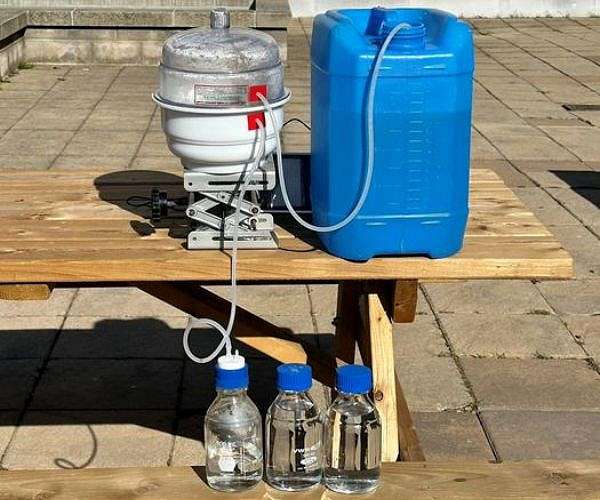Converting seawater into freshwater using solar energy technology
Researchers from the University of Waterloo have developed an innovative and energy-efficient desalination device that converts seawater into drinkable water using solar energy. The device uses a natural evaporation process, inspired by the way trees transport water, to provide a sustainable source of fresh water.
Desalination is becoming increasingly important for coastal and island states that face increasing concerns about water scarcity due to population growth and rising water consumption. According to the UN’s World Water Development Report 2024, approximately 2.2 billion people worldwide do not have access to clean water, underscoring the urgent need for new technologies to produce fresh water.
Traditional desalination systems rely on energy-intensive membrane filtration, which is prone to salt buildup that restricts water flow and requires regular maintenance. The newly designed system in Waterloo addresses these issues by drawing inspiration from nature and mimicking how trees move water from their roots to leaves.
“Our inspiration comes from observing how nature sustains itself and the way water evaporates and condenses in the environment,” says Dr. Michael Tam, professor in Waterloo’s Department of Chemical Engineering.
“The system we designed causes water to evaporate, transports it to the surface and condenses it in a closed cycle, effectively preventing the accumulation of salt, which reduces the efficiency of the device.”
The device is powered by solar energy and is remarkably efficient, converting approximately 93% of solar energy into usable energy – five times more efficient than current desalination technologies. The device can produce approximately 20 liters of fresh water per square meter, meeting the World Health Organization’s daily recommendations for basic drinking and hygiene needs.
The Waterloo team, including PhD students Eva Wang and Weinan Zhao, fabricated the device from nickel foam coated with a conductive polymer and thermoresponsive pollen particles. This material absorbs sunlight across the entire solar spectrum and converts it into heat. Water, distributed in a thin layer over the polymer, heats and rises through the system in a manner similar to how water moves through the capillaries of trees. As the water evaporates, the remaining salt is directed to the bottom layer, preventing clogging and maintaining efficiency.
Dr. Yuning Li, also a professor at Waterloo’s Department of Chemical Engineering, contributed to the project by measuring the light output of the device using a solar tester.
“This new device is not only efficient but also portable, making it ideal for use in remote areas where access to fresh water is limited,” said Li. “This technology provides a sustainable solution to the emerging water crisis.”
Next, the team plans to develop a prototype that can be tested at sea to evaluate the device’s performance on a larger scale.
“If the trial proves successful, the technology could sustainably deliver fresh water to coastal communities and advance the UN Sustainable Development Goals three, six, 10 and 12,” Tam said.
Research report:Thermoadaptive solar evaporation at the interface enhanced by dynamic water gating


